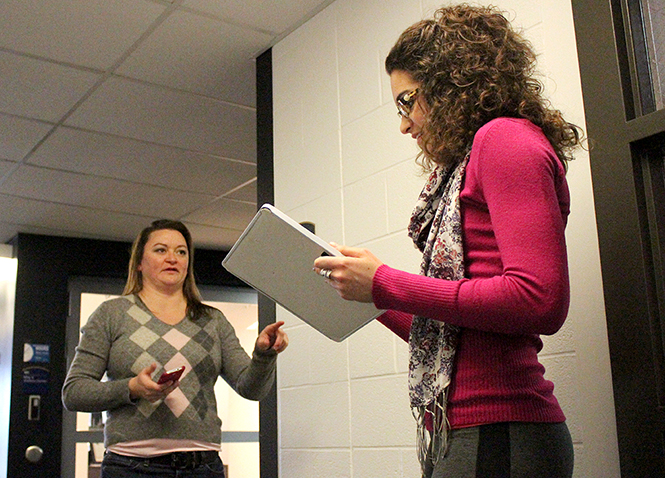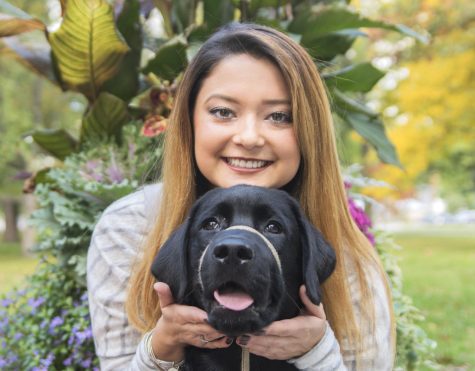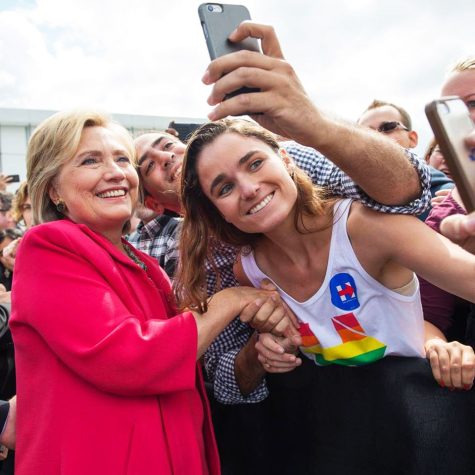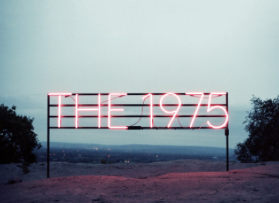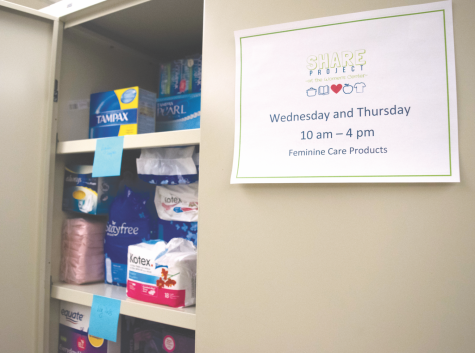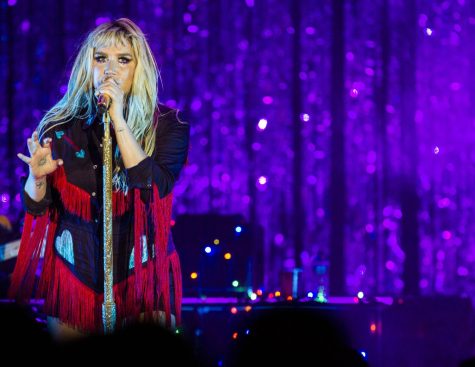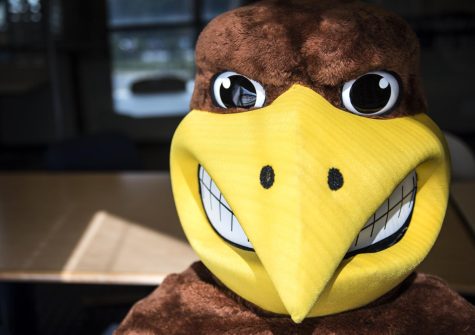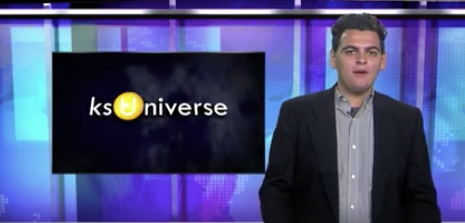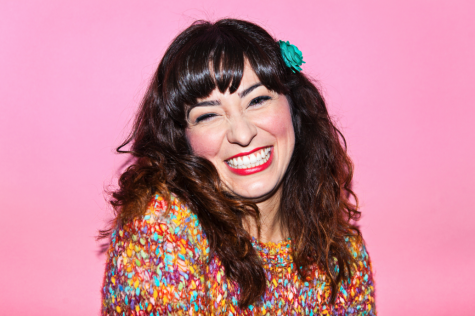Be yourself, be human
Kirstie Ratzer-Farley, senior communications studies major at Kent State, talkes with freshman Interior Design student Abbi Dummermuth about her “Be Human 2014” campaign, Wednesday, Feb. 19, 2014. She asks her to write down what her human experience is like in one word.
February 19, 2014
Sophomore Amanda Azzarelli describes her human experience in one word: “Lucky.” This is just one example of the hundreds of adjectives that could be used to relate someone’s idea of their lifetime so far.
The communication studies major said she is lucky that she had the opportunity to come to a school like Kent State to further her dreams and get a better education; she’s lucky enough to have parents who have given her those opportunities and helped her stay on the right path and for friends who have supported her through tough times.
Azzarelli and other students on Kent’s campus have taken part in the “Be Human 2014” campaign. Kirstie Ratzer-Farley, senior communication studies major, started the campaign in early February because she believes we all share one thing in life — being human.
Ratzer-Farley wants to capture how people describe their human experience. The idea is to show diversity and have people learn and understand diversity through worldwide campaign participation.
“It’s hard to watch people attack, discriminate and tear each other down instead of helping and lifting each other up,” Ratzer-Farley said. “It can be too easy to discriminate against others that are different from ourselves when there isn’t a level of understanding in place.”
Associate communication studies professor, James Ponder, developed his Communication and Influence class around the idea so students can better understand how difficult it really is to influence someone, especially in a campaign. He said Ratzer-Farley’s campaign comes at a time where people need to feel better about themselves.
“One of the most sought after things in 2014 was the notion of hope,” Ponder said. “She’s trying to bring about a tangible aspect of hope.”
The idea of the campaign is for one person in one part of the country or globe to see someone else in another part of the world whom may or may not look like them, and realize that they might go through life in a similar or different way.
Ratzer-Farley decided to put her campaign on social media sites including Facebook, Twitter and Instagram. Ratzer-Farley has been asking the people she passes daily to write one word that describes their human experience on a white board. Then she will take a picture of that person and the board. She also encourages others to take a selfie with it to post on the site.
She tied the selfie aspect into the campaign because of how often people take and send selfies. She took the idea and instilled it into Be Human 2014 with the tagline “Make your selfie meaningful.”
She’s been asking everyone to use the hashtag #behuman2014.
Once students come up with their one-word description and take their selfies, Ratzer-Farley posts everyone’s pictures online. But that’s not the only way to participate — she wants others to be inspired when they go online or on social media and see one of their friends who posted.
She wants people to understand the message she’s sending while hoping people ponder the question: How do you define your human experience?
Azzarelli said one of the things she found interesting was when she went on the Facebook page to look at the picture she submitted to Ratzer-Farley, she saw a lot of pictures of other students from her class that she didn’t know very well. She said it got her thinking the people in our classes serve as the backdrop to our own lives, and we don’t really realize that they’re human too.
“It was interesting to look at those people and see what word they chose and to look at them in a new way and see that they are really human,” Azzarelli said.
She also noted that a lot of the people in the pictures shared some of the same words —some even very similar to hers. It showed her that even though she doesn’t have much in common with those people that “we are all connected because we are all human.”
Junior communication studies major, Nathan Campbell feels Ratzer-Farley’s campaign appeals to everyone’s core — it makes people think critically about themselves and about life. He said it’s something good to do, and it’s something worth thinking about because it’s not thought about on a daily basis.
Campbell said he thought of his one word for a good hour or so while he was in class with Ratzer-Farley. He chose “enlightening.”
“Life is just an experience,” Campbell said. “The only thing that differs from everyone else is the content of their experience. If I could summarize everything into one thing, everything around us is enlightening.”
Campbell thinks that through the campaign, people are able to understand different parts of the world, where people stand on certain issues and see their individual perspectives, all in one word.
“It really captures a lot about that person if they really think about it because a lot of people can just write down a word and just pass [Ratzer-Farley] on and think, ‘Oh life for me is happy,’ “ Campbell said. “And for me, I really thought about enlightenment because it really reflects a lot about how I perceive things. I think it’s important in a diversity aspect for people to see what others are experiencing and to build on their character.”
Ratzer-Farley also approached senior communication studies major Erin Adcock, who took a picture with the word “unexpected.”
She said people can’t really expect things, whether they are small, minor details or huge life changing experiences. She feels life surprises everyone whether they are good or bad and we should all “expect the unexpected.”
Adcock believes it’s great to show how all the different and similar words and different human experiences people can have bring us together.
Farley said her campaign is going strong. Each day the likes and followers on her Be Human 2014 social media pages go up. Ratzer-Farley has had family and friends reach out to their families and friends in countries from all over the world, including Canada, Scotland, Singapore, India and Mexico. So far, five other U.S. states are also being represented in the campaign.
Ratzer-Farley’s biggest message is for people to understand that if someone is experiencing life in a certain way, know that there are others in the world who are similar and or opposite to them experiencing the same things.
“You’re not the only one with a hard day,” Ratzer-Farley said. “I also want people to realize just because we are different doesn’t mean we don’t experience life in the same way.”
She said she would love Kent State students to check her campaign out and participate by sending their selfies and one-word descriptions.
“I want to help bridge the disconnect between humans by offering them a chance to see people that appear to be similar but may have a different human experience,” she said. “I want to see what other KSU students think of life — how they experience and describe their own human experience.”
Contact Melissa Puppo at [email protected]


